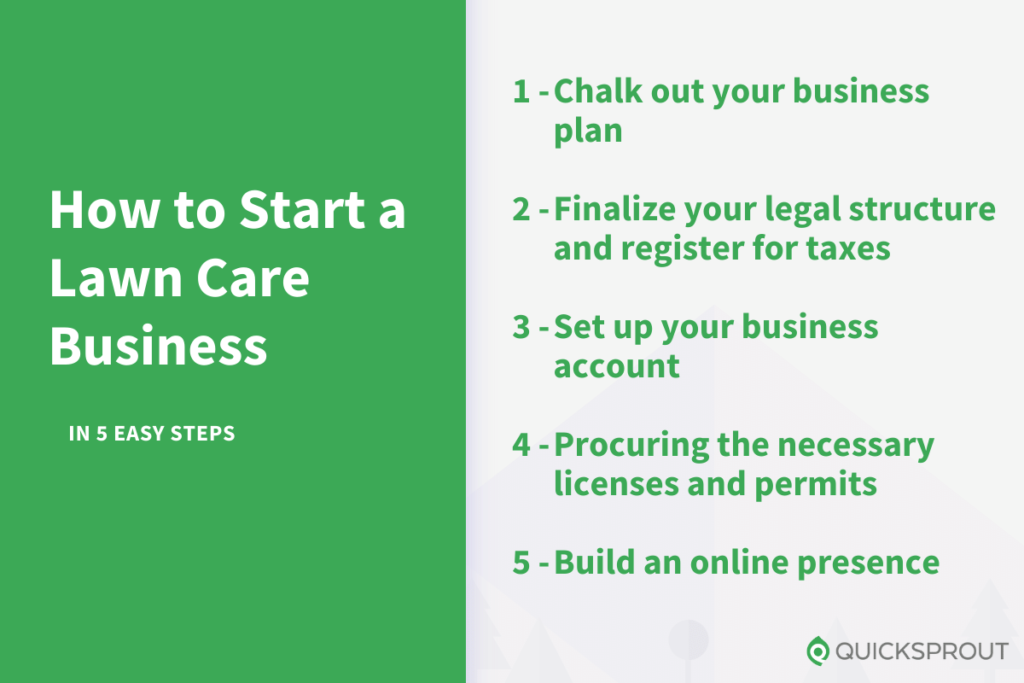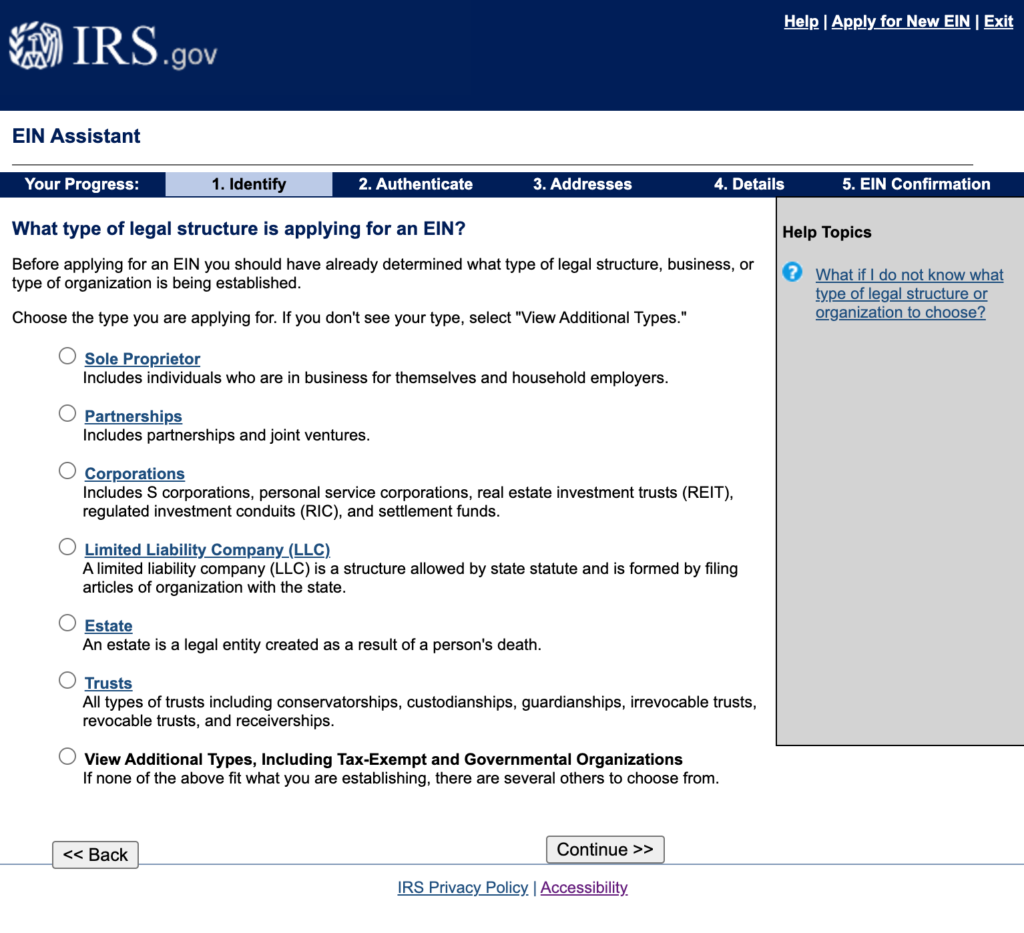Starting a lawn care business gives you the rare opportunity to combine your entrepreneurial spirit and love for the outdoors.
Despite being a competitive industry, lawn care is one of the more affordable startups that offers tons of flexibility.
You can choose the services you offer, set your own schedule, decide whether you want to cater to residential or commercial customers—or both, and amazingly, get paid to exercise and follow your passion.
But just like any other business, you have to figure out the initial steps to put yourself on the fast track to success, which is exactly where this guide comes into the picture.
I’ll show you a step-by-step breakdown of how to start a lawn care business to ensure your venture is well planned, properly registered, and legally compliant.
Let’s begin, shall we?
Top Business Formation Services to Start a Lawn Care Business
If you want to start a lawn care business, you’ll need a business formation service. Here’s the best options.
- LegalNature – Best for managing business formation documents
- Incfile – Best low-cost formation services
- LegalZoom – Most popular business formation service
- Rocket Lawyer – Best for ongoing legal advice
- Northwest Registered Agent – Best registered agent services
- ZenBusiness – Best for simple LLC filing
- Inc Authority – Best free LLC setup
- Incorporate – Best for C-Corps and S-Corps
- Swyft Filings – Best customer support
- MyCompanyWorks – Best for fast setups
- MyCorporation – Best for free EIN
You can read our full reviews of each business formation service here.
5 Steps to Start a Lawn Care Business
Starting a lawn care business is simple when you break it down into smaller, attainable steps:
- Chalk out your business plan
- Finalize your legal structure and register for taxes
- Set up your business account
- Procuring the necessary licenses and permits
- Build an online presence

The Easy Parts of Starting a Lawn Care Business
The best thing about starting a lawn care business is the low startup cost.
All you need is some equipment and a way to arrive at your client‘s homes, and you can start earning right away. Even if you don’t have the capital to purchase equipment, you can always rent it—or simply use the tools you have at home.
Generally, launching and running any business requires a few years of experience, but not lawn care. Therefore, you can hire people who don’t have formal education or training. Nearly everything can be learned on the job, which again saves recruitment or training costs.
What’s more, working with a client in the lawn care niche will nearly always translate to more business.
For instance, after being mowed, a lawn will need periodical fertilizer and weed and bug treatments. If you do a satisfactory job on the first go and manage to impress your client, there are high chances they’ll hire you again for lawn maintenance.
The Difficult Parts of Starting a Lawn Care Business
The hardest part of launching a lawn care business is beating the competition.
You may already have several lawn care businesses in your area, with most of them already having set clients. If you want to establish a loyal clientele in these circumstances, you’ll have to offer discounted prices—something that may hurt your finances.
The other problem is finding genuinely skilled workers.
You may be a one-person show right now, but once you start scaling, you’ll need reliable members on your team. Unfortunately, 35% of landscape and outdoor specialty firms cited difficulty in hiring new staff and/or being understaffed as one of the main challenges in the lawn care niche.
Nevertheless, all the effort and time you put in running your business and looking for skilled employees will pay off in the long run—provided you remain dedicated and know the right way to proceed.
Step 1: Chalk Out Your Business Plan
Having a well-thought-out and detailed plan can work wonders for your lawn care business. In this stage, you’ll find yourself asking critical questions when drafting your business plan, such as:
- What kind of clients do you want to work with? Do you prefer working with homeowners over business owners?
- Which geographic areas do you want to serve?
- Who are your competitors? How well do you fare when compared to them?
- What services do you plan to offer?
- How much do you want to charge for your services?
- How do you plan on marketing your business?
When mapping out the specifics of your business, you’ll discover opportunities and identify USPs that separate you from your competition—something that will likely translate to better outcomes and more business.
But before you do that, there are a few things you need to do:
Select a Name and Logo for Your Lawn Care Business
Brainstorm a creative and catchy name for your lawn care business.
I recommend being safe and using something practical and professional, especially considering your business name is going to be on practically everything—from your emails to marketing and advertising materials to merchandise.
Logos are equally important as they help create brand awareness. If you don’t have a budget to hire a graphic designer right now, you can always use a free design website like Canva.

Decide What Lawn Care Services to Offer
Lawn care includes all kinds of services, ranging from cutting grass lawns to turf maintenance to debris removal to weed and pest control. Here’s a list of some of the most popular lawn care services offered by similar businesses:
- Lawn installation
- Planting native lawns, along with native species and pollinators in and alongside grass lawns
- Selling fertilizers, insecticides, and other lawn care products
- Weeding
- Mulching and other similar gardening work
Try to gauge the service demand to make better decisions. For instance, if you find your client favors green and eco-friendly practices, offer specialized services around the same line to attract more customers.
Note: The services you decide will directly affect your startup costs, so you have to be mindful of your budget. For instance, if you offer mowing services, you’ll only need a lawnmower and a transport vehicle. But if you offer weeding in addition to mowing, you’ll need a lawnmower, a transport vehicle, wheelbarrows, weedwhackers, weedkiller chemicals, trowels, and so on.
Figure Out Your Lawn Care Business Costs
Prepare a budget to account for startup and ongoing costs, including business licensing, equipment, business stationery and supplies, website, promotional material, internet connection, vehicle, and so on.
Experts also advise getting liability insurance for your business, along with worker’s compensation insurance (if you plan on hiring employees).
Your startup budget should include factors like a mower, leaf blower, gasoline can, website creation, internet services, promotional signage, a pickup truck lease, among several others. These budgets generally clock at about $3,000—provided you don’t hire any assistants.
Besides this, you must account for ongoing expenses too, such as labor costs, trucks, and equipment maintenance. This will cost you about $5,000 per month, but the amount can be lower or higher depending on your location, business plans, and the salary you’re willing to pay.
Disclaimer: Please be careful when choosing lawn and garden tools. Not only do they involve money, but also directly influence your work quality.
Determine Your Target Market and Fees
Most lawn care entrepreneurs target local businesses since they’re usually willing to pay more for your services than residential customers and are likely to sign for regular service.
Big corporations can also be excellent customers, such as hospitals, shopping malls, schools, and office buildings. Most of them have multiple big lawn spaces, so there’s scope for more business.
You can stick to residential clients too if you want. There is no right or wrong choice here; it all boils down to your preferences.
Next on the list is to decide how much to charge your customers.
Legitimate companies generally charge over 150% of the minimum wage for the total amount of time every worker is on the customer’s side. So if the minimum wage in your area is $10 per hour, your charges will be based on a rate of $15 per hour.
Commercial businesses may pay even more because of the greater time involved to cut the lawn.
Nevertheless, determining your charges is totally your call. Just make sure you don’t end up underpricing your services to attract more clients.
Step 2: Finalize Your Legal Structure and Register for Taxes
As you may have deduced, this step is about sorting out the legal formalities concerning your business, namely your business and tax entities.
And while this may sound intimidating, it really isn’t. Read on as I explain this in more detail below.
Choose Your Business Entity Type
To refresh your memory, you can choose between the four most common business structure entities: sole proprietorship, partnership, corporation, and limited liability company (LLC).
While each structure has its own benefits and drawbacks, forming an LLC or a corporation will protect you from being personally liable if your lawn care business is ever sued.
You can also consider hiring online business formation services to sort out the nitty-gritty details involved in starting a business on your behalf.
Apply for an EIN
EIN stands for Employer Identification Number, which is also known as a Federal Employer Identification Number (FEIN) or Federal Tax Identification Number (FTIN).
It’s a unique nine-digit number that enables the internal Revenue Service (IRS) to identify your business for tax reporting. Think of it as a social security number for your business.
You have to apply for an EIN to register for state and federal taxes before you can open for business. The good news is applying for an EIN is super easy and completely free of cost. All you need to do is apply online on the IRS website using the EIN Assistant.

Educate Yourself in Applicable Small Business Taxes
Your choice of business structure influences how your business will be taxed. For instance, if you decide to create a C-Corp, you’ll find yourself paying double taxes—first on behalf of the business and then on the amount you earn through the business.
Here are a few Quicksprout guides to help you understand this in more detail:
- The Beginner’s Guide to LLC Vs. S-Corp
- The Beginner’s Guide to LLC Vs. C-Corp
- The Beginner’s Guide to LLC Vs. Partnership
- Beginner’s Guide to Corporate Entities
While you’re at it, you should also find out about specific state and franchise taxes that may apply to your business.
Step 3: Set Up Your Business Account
This step involves setting up a business bank account, a business credit card (if needed), and maintaining an account of all your expenses and income sources.
Open Your Business Bank Account
You need dedicated business banking to protect your personal assets.
If you mix up your personal and business accounts, the IRS will treat both your business accounts as a single unit, putting your personal assets like your home, car, and other valuables at risk if your business gets sued. Besides, opening a business bank account also simplifies accounting and tax filing.
So make sure you create a bank account for your business pronto.
Get a Business Credit Card
Learning how to build business credit is key for long-term success.
This knowledge can help you get a credit card and other sources to finance to raise finance in your business’s name, which in turn, will give you access to several benefits like better interest rates and higher lines of credit.
A business credit card can also be useful for separating your personal and business expenses, putting all your business expenses in one place.
Set Up Business Accounting
After creating your business bank account and getting a credit card, you’ll have to set up business accounting, where you record all your expenses and sources of income.
Doing this will help you understand how well your business performs. Plus, keeping accurate and detailed accounts can also streamline tax filing.
Step 4: Procuring the Necessary Licenses and Permits
Failing to acquire necessary permits and licenses can be very dangerous. You may end up paying exorbitant fines, but the government may order you to shut down your business.
Find Out the Applicable Licences for Your Lawn Care Business
You have to figure out the necessary licenses and permits you need to run your business.
In most states, businesses have to obtain a Lawn Service license. You may need to consider certain local licensing and regulatory requirements too.
- Check your town, city, and the county clerk’s office to get more information
- Contact any local associations listed in the U.S. Small Business Associations directory of local business resources. for more assistance.
Prepare Service Agreements
To be on the safer side, you should ask all your clients to sign a services agreement before starting a new project. This agreement should outline client expectations and minimize the risk of legal dispute by clarifying payment terms and conditions.
Step 5: Build an Online Presence
Having a solid online presence is extremely crucial in today’s time. This includes creating your business website, social media profiles, and networking.
Let’s discuss a few ways to build a remarkable online presence to attract customers for boosting sales and marketing your services.
Create Your Business Website
All legitimate businesses have websites, so there’s no reason why yours shouldn’t.
You can use website builder tools like Wix or GoDaddy to create a basic website within minutes. This way, you won’t have to hire a web developer or designer and still have a website you can be proud of.

Sign Up for Popular Social Media Platforms
Your target clients can be on Facebook, Instagram, Yelp, and Google Businesses.
You should first sign up on various social media platforms, followed by adding information about your lawn care business. Don’t forget to add photographs of your previous landscaping jobs and positive customer and positive customer testimonials to lend credibility to your name.
Network Your Way to the Top
Tons of small lawn care businesses start with only a single customer. So even if you’re just starting out, no need to worry. Your work will speak for you.
However, what you do need to do is network to gain more word-of-mouth publicity. Reach out to potential customers and advertise your services to boost business.
